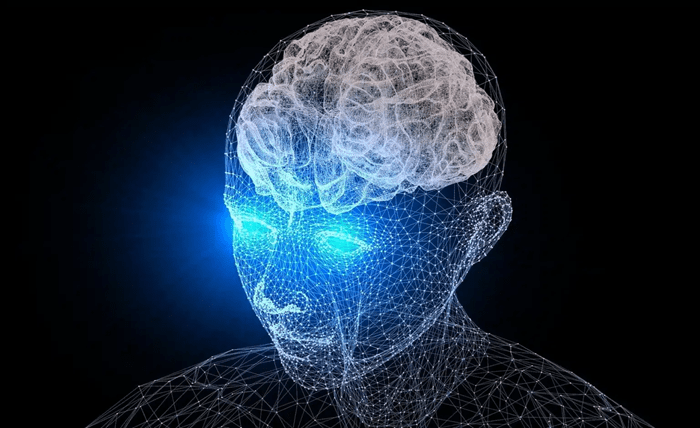
Traumatic brain injuries (TBI) can lead to many physical, mental, and emotional challenges. Sensory sensitivities and vision problems are common issues during recovery. These problems can make daily activities harder, reduce quality of life, and make it tough to return to regular routines. The impact of sensory and vision issues can range from minor problems to serious conditions that need ongoing treatment.
Understanding how TBI affects sensory processing and vision is important for creating effective recovery plans. With the right help, such as specific therapies and assistive technologies, many people can improve their sensory and visual functions.
How TBI Impacts Sensory Processing
Traumatic brain injuries often alter the brain’s ability to process sensory information, resulting in heightened sensitivities or difficulties with certain stimuli. Common challenges include increased sensitivity to light, sound, touch, or temperature. Everyday experiences, like hearing ordinary noises or being under bright lights, can become overwhelming or distressing.
These sensory changes typically stem from damage to brain areas such as the thalamus or sensory cortex, which play key roles in interpreting sensory input. The disruption in these systems creates challenges that can vary greatly in severity and type among individuals.
Managing sensory sensitivities after a TBI requires personalized strategies. Environmental modifications, sensory integration therapy, and medications designed to reduce overstimulation and discomfort can help improve the quality of life for those affected.
Common Vision Problems After a TBI
Traumatic brain injuries (TBI) frequently lead to vision problems due to damage to the brain’s visual pathways or the cranial nerves that control eye movement. Understanding and addressing these issues is essential for effective recovery.
- Blurred and double vision: These are common symptoms that interfere with reading, driving, and other daily tasks.
- Difficulty focusing and peripheral vision loss: Challenges in concentrating on objects or reduced side vision can significantly impact independence and mobility.
- Photophobia (light sensitivity): Extreme sensitivity to light can make everyday activities, such as being outdoors or using screens, uncomfortable or impossible.
- Specialized treatments: Neuro-optometrists and vision therapists can offer targeted therapies like corrective lenses, visual exercises, and prisms to aid recovery.
- The importance of early intervention: Prompt treatment helps prevent vision problems from worsening and improves the likelihood of restoring normal function.
The Role of Neuroplasticity in Recovery
Neuroplasticity, the brain’s ability to adapt and reorganize itself, plays a significant role in overcoming sensory and vision challenges after a TBI. Rehabilitation therapies often aim to stimulate neuroplasticity, encouraging the brain to form new pathways to compensate for damaged areas.
Vision therapy, for example, uses repetitive exercises to improve coordination between the eyes and the brain. Similarly, sensory integration therapy helps patients gradually adapt to stimuli that previously caused discomfort. Harnessing neuroplasticity allows individuals to regain lost functions and adapt more effectively to ongoing challenges.
Coping with Light and Sound Sensitivities
Light and sound sensitivities can be some of the most challenging sensory issues during TBI recovery. Bright lights, flashing screens, or loud environments often trigger symptoms like headaches, dizziness, or emotional distress. These sensitivities can significantly impact the ability to work, socialize, or participate in daily activities.
Managing these challenges requires a multifaceted approach. Tinted glasses, noise-canceling headphones, and creating a calm, controlled home environment provide immediate relief. Over time, gradual exposure therapy can help desensitize the brain, enabling better tolerance for everyday stimuli.
With the right tools and strategies, individuals can reduce discomfort and regain a sense of normalcy, improving their ability to engage in daily life.
The Psychological Impact of Sensory and Vision Issues
Sensory sensitivities and vision problems can take a significant toll on emotional well-being, leading to frustration, anxiety, and even depression. Tasks that were once simple, such as reading, driving, or socializing, can feel overwhelming and isolating, further compounding emotional distress. These challenges often leave individuals feeling helpless or misunderstood during their recovery journey.
Seeking support is crucial for addressing both the physical and emotional aspects of recovery. Therapy and support groups can provide a safe space to navigate these challenges, while legal assistance can help secure compensation for necessary treatments. For example, working with a Kirkland brain injury lawyer can ensure that individuals receive the resources and financial support they need to access comprehensive care. Incorporating mental health care and legal advocacy into the recovery process ensures a more balanced and effective approach to healing.
Assistive Technologies for TBI Recovery
Modern technology offers innovative solutions to support individuals recovering from traumatic brain injuries (TBI), particularly in managing sensory and vision challenges. These advancements play a vital role in enhancing quality of life and promoting independence.
- Adaptive screens and specialized lighting systems: These tools help reduce visual strain and accommodate light sensitivity, improving comfort in daily activities.
- Virtual reality therapy tools: VR-based interventions aid in cognitive rehabilitation, visual tracking, and sensory integration, providing immersive and engaging therapy options.
- Magnifiers and digital reading devices: For those with vision impairments, these devices make reading and other tasks more accessible and manageable.
- Apps for visual tracking improvement: Mobile applications designed to enhance eye coordination and tracking skills offer targeted support for vision rehabilitation.
- Comprehensive support for recovery: Incorporating assistive technologies into a recovery plan empowers individuals to regain functionality and participate more fully in their daily lives.
The Importance of Personalized Rehabilitation
Every TBI case is unique, requiring recovery plans that are customized to meet the individual’s specific needs. A detailed assessment of sensory and vision challenges enables healthcare providers to craft treatment programs that target particular deficits and align with the patient’s goals for recovery.
A well-rounded approach often combines various therapies, including occupational therapy, vision therapy, and sensory integration techniques. This comprehensive strategy addresses multiple aspects of recovery, fostering greater improvement across different functional areas.
Regular evaluations and adjustments to the treatment plan are vital for sustaining progress. As the individual’s needs evolve, these updates ensure the rehabilitation process remains effective and aligned with their recovery journey.
Supporting Long-Term Recovery
Sensory sensitivities and vision issues often require ongoing management, even years after the initial TBI. Establishing a strong support network that includes medical professionals, family, and community resources is vital for maintaining long-term progress.
Education about TBI and its effects helps both patients and their caregivers understand the recovery process and set realistic expectations. With consistent support, adaptive strategies, and access to resources, individuals recovering from a TBI can lead fulfilling lives despite ongoing challenges.




